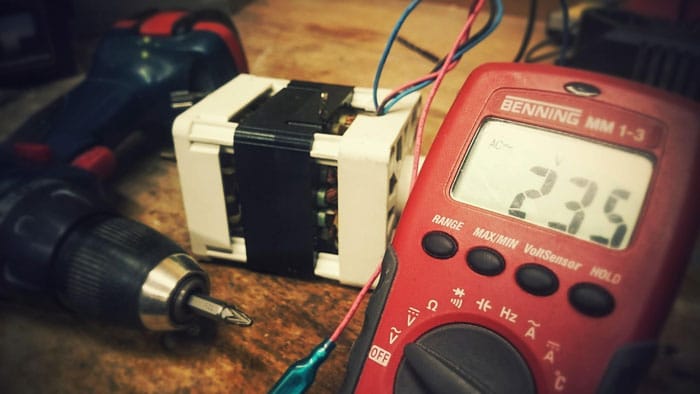
This post provides detailed information on the calibration coordinator job description, including the key duties, tasks, and responsibilities they commonly perform.
It also presents the important requirements you may be expected to meet to be hired for the calibration coordinator role by most employers.
What Does a Calibration Coordinator Do?
A calibration coordinator is responsible for managing and maintaining clerical activities for the successful operation of the maintenance department of companies.
The calibration coordinator job description entails putting together databases and other hard-copy records, and maintaining inventory parts in the department.
The calibration coordinator, who can also be called manager or supervisor, will carry out work orders for both preventive and corrective purposes, making use of their knowledge and expertise on the job to identify useful and equivalent parts.
He/she will ensure high organizational standards when carrying out maintenance work on calibrated equipment used in determining product quality for repair stations and new production activities. This work may include taking accurate equipment measurement and tagging.
The calibration coordinator’s role also includes being responsible for implementing accurate, effective, and resourceful calibration support processes.
They will make arrangements for work orders, planning, and scheduling.
Their duties also include checking stock of equipment and taking note of items that are in short supply, which should be purchased.
Before making orders for new equipment, the coordinator for calibration will perform the necessary checks on the equipment to ensure they are durable and of good quality. This check is important to ensure that only the best equipment is brought in for outstanding final production results.
They will also ensure that there are equipment in the company’s Calibrated Equipment Reserve for quick replacement of parts in the event of an equipment malfunctioning during production process.
In order to ensure that production activities are executed successfully, the calibration manager will need to develop good relationship with vendors who are involved in the distribution of equipment.
Calibration Coordinator Job Description Example
The major duties, tasks, and responsibilities commonly performed by people who work as calibration coordinator is shown in the following job description example:
- Manage and operate all calibration system labels and assist in the periodic vendor audits for quality
- Stand in as the liaison person for the organization and its clients to facilitate work activities
- Ensure that calibration documents are constantly and properly updated to make available up to date records of activities for future referencing. In doing this task, the manager will format and procure the release of quality system documents, which include work procedure manuals, instructions, and business processes
- Keep the prints of all calibrated instruments and enter details of prints into specialized electronic devices while keeping master copies of the said documents safely
- Prepare reports of departmental activities, and also prepare compliance matrices to facilitate customer contracts requirements in adherence to SAL compliance
- Inspect conditions of calibrated measurement and specifications; carry out uncomplicated repairs; and supervise the repair of difficult technical problems by the best hands available to prevent continuous break down of equipment, which can result in low quality production
- Give direction to the various departments in the formulation of their departmental work specifications and procedures, to ensure that they are in line with organizational goals, standards, and ethics
- Work with customers in carrying out comprehensive quality surveys to determine customers’ perception of finished calibrated products and make use of feedback data to improve production quality, and also give some assistance in the making of supplier surveys, which is necessary in the production chain
- Gather, evaluate, and format quality Key Performance Indicators (KPI) data on a regular basis as part of operational requirements
- Help the lead auditor in verifying audit findings for accuracy to create a balance in the database
- Carry out configuration and medication status and implement changes where required, and verify product dimensions for accuracy
- Inspect products for defect before delivery to maintain high quality standards
- Fill all legal documents required for authorization and operations within the rule of law to avoid sanctions
- Maintain production equipment by implementing maintenance standards
- Conform to safety guidelines and regulations to guaranty safety of workers and clients
Calibration Coordinator Resume Preparation
When preparing a resume for the post of calibration coordinator, there are different sections to complete. One of such sections is the job experience part, which can be completed by using the sample job description provided above.
The job description sample highlights the common functions of most calibration supervisors, which you can modify to suit your actual experience as a coordinator of calibration activities for a company you have worked with, in completing the professional experience part of your resume.
Requirements – Skills, Knowledge, and Abilities – for Calibration Coordinator Job
If you are aspiring to work as a calibration coordinator, here are important skills and knowledge base most employers usually require. These qualities have been proven to aid people working in this position to be more productive on the job.
- Possession of advanced professional knowledge of calibration
- Written and verbal communication skills, which helps in ensuring that instructions are properly given and understood to avoid error
- Interpersonal skills: The coordinator needs strong human relations skills to be able to relate effectively with persons of different background to achieve set goals on the job
- Management skills: He/she must have strong managerial skills to be able to manage both human and equipment resources under his/her responsibilities
- Must be multitasking: The calibration manager must be able to complete multiple assignments within a reasonable period, and meet deadlines
- Good decision making skills: The coordinator should be able to think logically and analytically to ensure the right decisions are made concerning the use of equipment, to avoid equipment failure during production process




